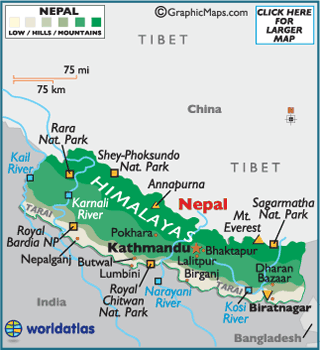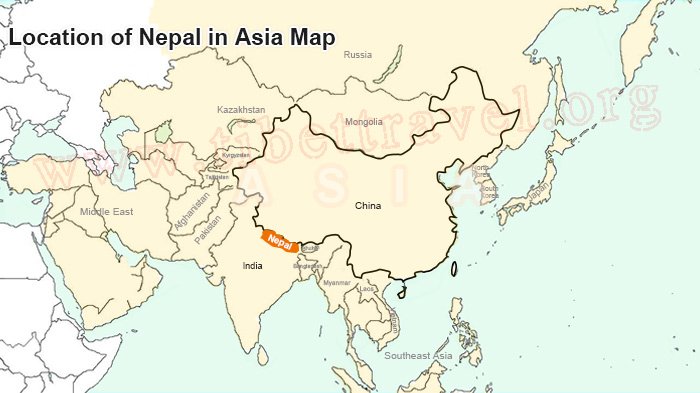Travel Guide
Nepal (Country in South Asia)
Nepal, officially the Federal Democratic Republic of Nepal, is a landlocked country in South Asia. It is located mainly in the Himalayas but also includes parts of the Indo-Gangetic Plain. With an estimated population of 26.4 million, it is 48th largest country by population and 93rd largest country by area.
Nepal has the most striking feature in the great number of temples and Gods. Wandering around Kathmandu, you will come across a small temple in three steps while another monastery has already appeared in your sight. It's not exaggerated to say that temples in Nepal are as much as its housing residences.
Buildings with a strong religious color is another highlight in Nepal, where tourists can appreciate the medieval city, exquisite carvings, etc. In addition, Nepal also has the wondrous diversity of flora and fauna. Chitwan National Park is a good case in point. It provides a prefect habitat for all kinds of wildlife. Many endangered species like Asia elephant, Indian rhinoceros, Himalayan marmot, etc. are enjoying a happy life here. With a diverse geography, Nepal has risen from the subtropical regions to alpine grasslands and become a great paradise for adventurous mountaineers, explorers and visitors from all over the world.

Highlights of Nepal
Seven Federal Provinces: According to schedule 4 of the new Constitution, Nepal is divided into 7 provinces and 75 districts. They are simply called as Province No.1 to No.7.
Total Area: 147,181 square kilometers, the world's 94th largest country
Religious Belief: Hinduism (81.3%), Buddhism (9%), Islam (4.4%), Kirant (3%), Christianity (1.4%), Animism (0.4%), Irreligion (0.5%)
Geography: northern mountain region including Mt. Everest, the world's highest mountain, central hill region, southern lowland plains
Language: Nepali (official language) and English
Currency: Nepalese Rupee (NPR)
Time Zone: Nepal Standard Time (UTC +05:45)
Emergency Call: 100 for police,101 for fire,102 for medical
Bordering Countries: India and China
Economy: Services (48.5%), Agriculture (36.1%) and Industry (15.4%)
Ethnic Groups: Tharu people, Limbu people, Lama people, Sherpa, etc.
Staple Food: Dal Bhat Tarkari (the boiled rice is served with a lentil soup and curried vegetables), Momo (Tibetan-style dumplings with Nepali spices), etc.
Wildlife: Asia elephant, Asiatic black bear, Bengal tiger, Indian rhinoceros, Himalayan marmot, Gharial, Eurasian lynx, Indian fox, Tibetan fox, etc.
Mineral Deposits: Iron, Copper, Lead, Zinc, etc.
